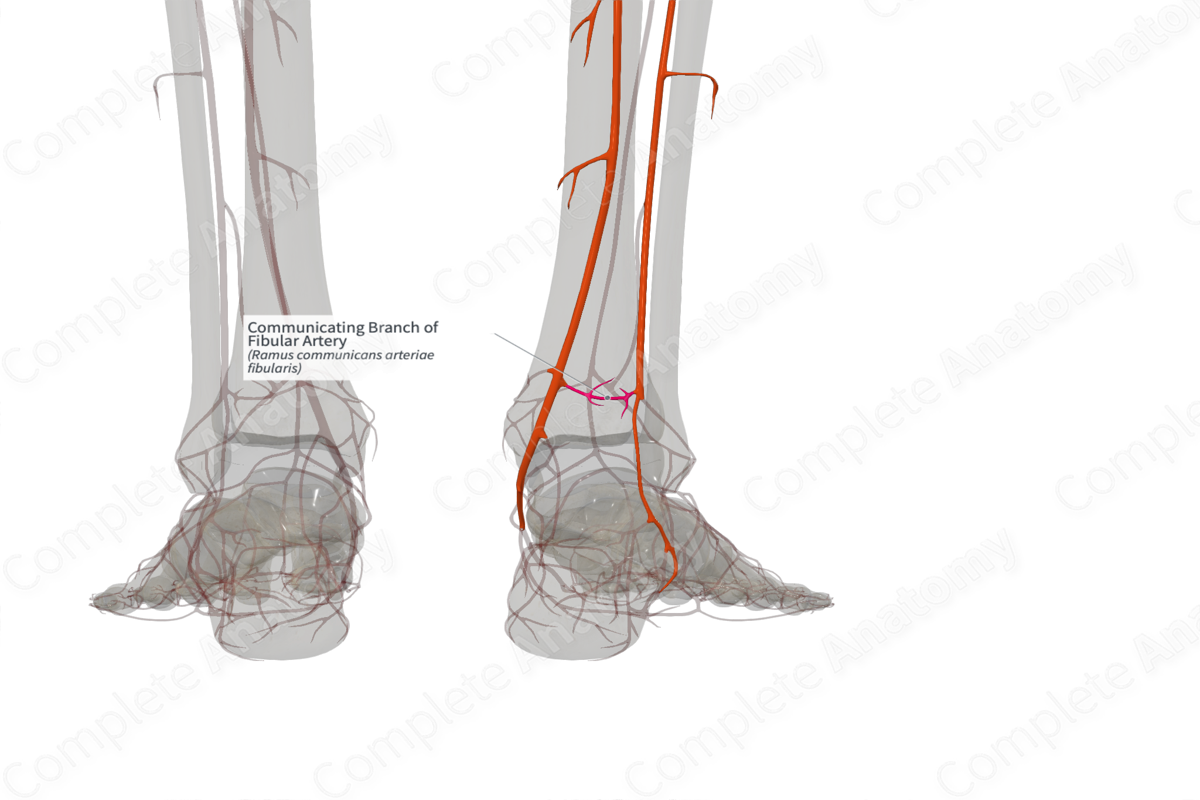
Communicating Branch of Fibular Artery (Right)
Ramus communicans arteriae fibularis
Read moreQuick Facts
Origin: Fibular artery.
Course: Medially along the posterior tibiofibular ligament.
Branches: None.
Supplied Structures: Collateral supply to the distal leg.
Related parts of the anatomy
Origin
The communicating branch of the fibular artery arises from the fibular artery in the distal leg, approximately 5 cm proximal to the ankle joint (Standring, 2016).
Course
From its origin in the distal leg, the communicating branch of the fibular artery runs laterally and deep to the calcaneal tendon along the posterior tibiofibular ligament.
Branches
There are no named branches. The communicating branch of the fibular artery joins the posterior tibial artery.
Supplied Structures
The communicating branch of the fibular artery provides a collateral supply in the distal leg.
References
Standring, S. (2016) Gray's Anatomy: The Anatomical Basis of Clinical Practice. Gray's Anatomy Series 41st edition edn.: Elsevier Limited.
Learn more about this topic from other Elsevier products
Fibular Artery

This flap is based on the fibular artery, a branch of the posterior tibial artery 2 – 3 cm below the tendinous arch of the soleus, situated in the deep flexor compartment, giving off perforator branches which enter the lateral compartment to supply the fibula, muscles, overlying subcutaneous tissue and skin [25], Figs.




